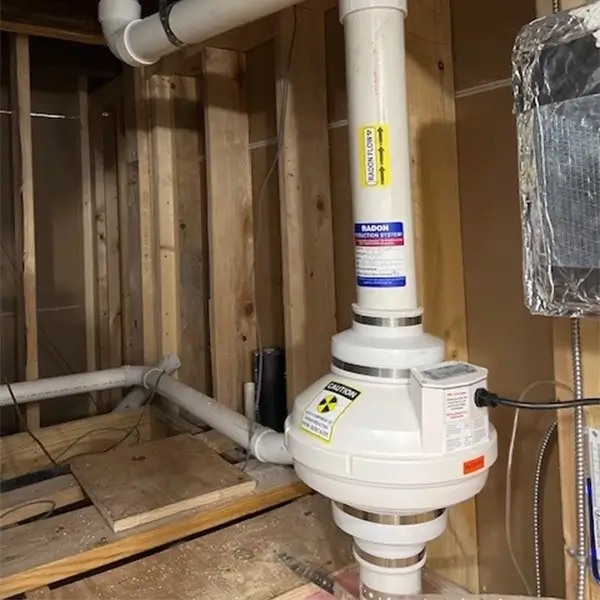What Is Radon Mitigation Compliance Testing?
Radon mitigation compliance testing involves a thorough inspection of a property’s radon mitigation system to confirm that it meets the standards for residential properties and commercial/multi-residential properties set forth by the Indoor Environments Association (formerly AARST). This testing process ensures the system has been properly installed and is functioning correctly to lower radon levels, safeguarding occupants of homes, offices, schools, and other commercial spaces from long-term radon exposure.
A certified inspector from the National Radon Proficiency Program (NRPP) will carry out a detailed examination of the mitigation system. This includes assessing essential components such as the system monitor, piping, exhaust termination, and fan installation. If the system is found to be non-compliant, the inspector will provide a report detailing the necessary corrections to bring it into compliance, whether the property is a single-family home, a multi-unit residential building, or a commercial facility.
Why Radon Mitigation Compliance Testing Matters
Radon mitigation compliance testing is a crucial step in ensuring the long-term effectiveness of the mitigation system, whether in residential homes or commercial spaces. Without this testing, property owners may unknowingly remain at risk of radon exposure if the system is improperly installed or not functioning optimally. Compliance testing provides the peace of mind that radon levels have been reduced to safe levels, protecting residents, employees, and tenants from the potential health risks associated with long-term radon exposure, such as lung cancer.
Testing also ensures that the system meets current standards and follows best practices for radon mitigation. As building codes and standards evolve, compliance testing helps property owners stay up to date, ensuring that their mitigation systems are not only effective today but will continue to protect their building in the future. In the event that repairs or adjustments are needed, an inspection can identify issues before they become a significant concern, saving time, money, and future complications.
Key Components of Radon Mitigation Compliance Testing
The compliance test focuses on several critical areas to ensure that the mitigation system is effectively reducing radon levels:
Timing & Best Practices for Compliance Testing
The EPA recommends conducting radon mitigation compliance testing within 24–30 days after the system has been installed and activated. For both residential and commercial properties, it is best to use an independent, third-party tester for this process to avoid conflicts of interest. The testing typically lasts between 2 to 7 days, during which the property must remain closed (except for normal entry and exit).
Property owners should also consider retesting every two years, or sooner if the building undergoes significant renovations or structural changes that could impact radon levels. Additionally, even buildings that test below the EPA’s action threshold of 4 pCi/L can benefit from periodic testing, as radon levels may still fluctuate over time.
Protect Your Home with Professional Radon Compliance Testing
Whether you have recently had a radon mitigation system installed in your home, office, or commercial building, or are preparing to sell or renovate your property, compliance testing is a critical step in ensuring the safety and longevity of your system. Schedule a compliance inspection with Southwest Radon Eliminators today to confirm your radon mitigation system meets all safety standards.
